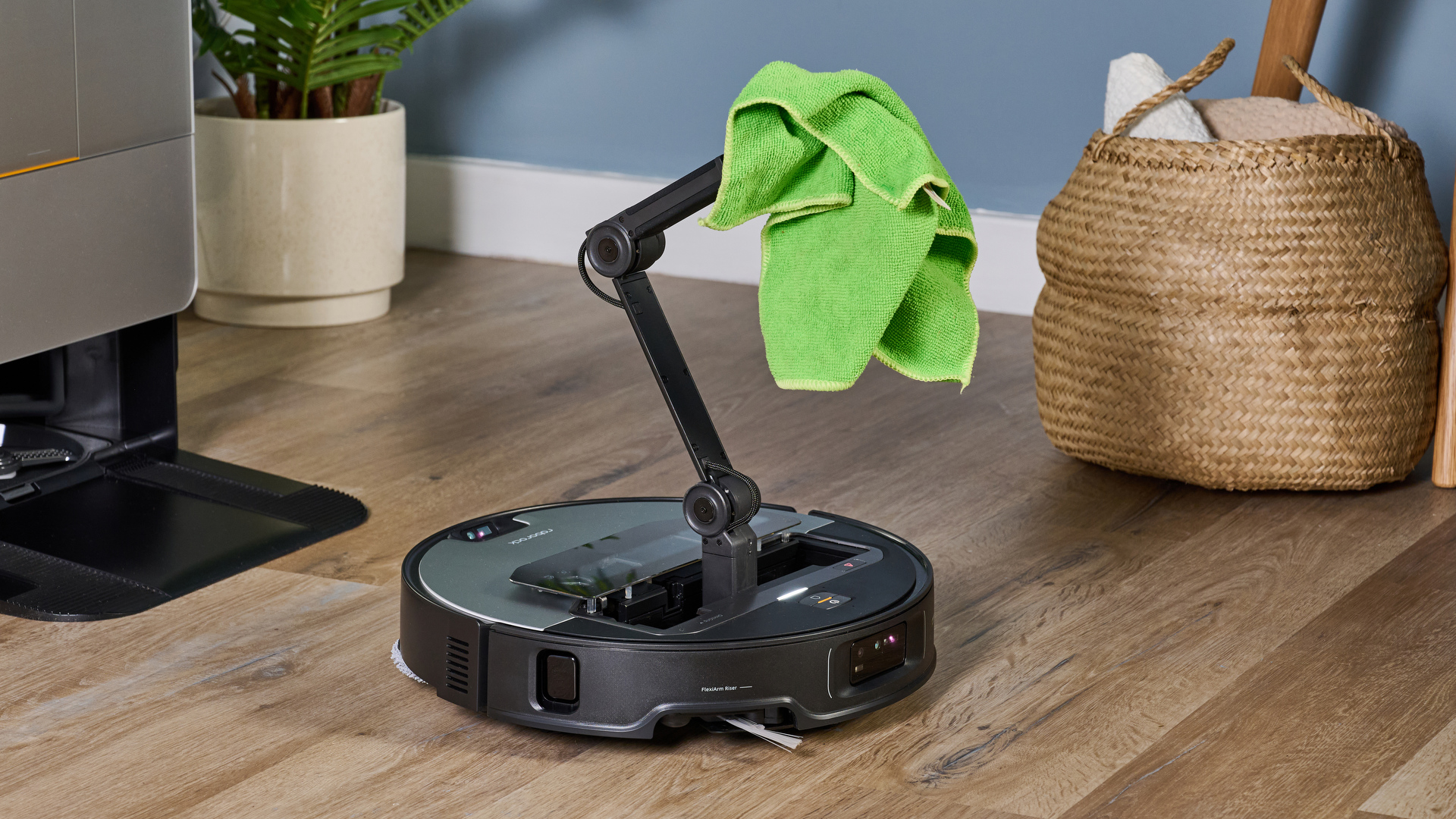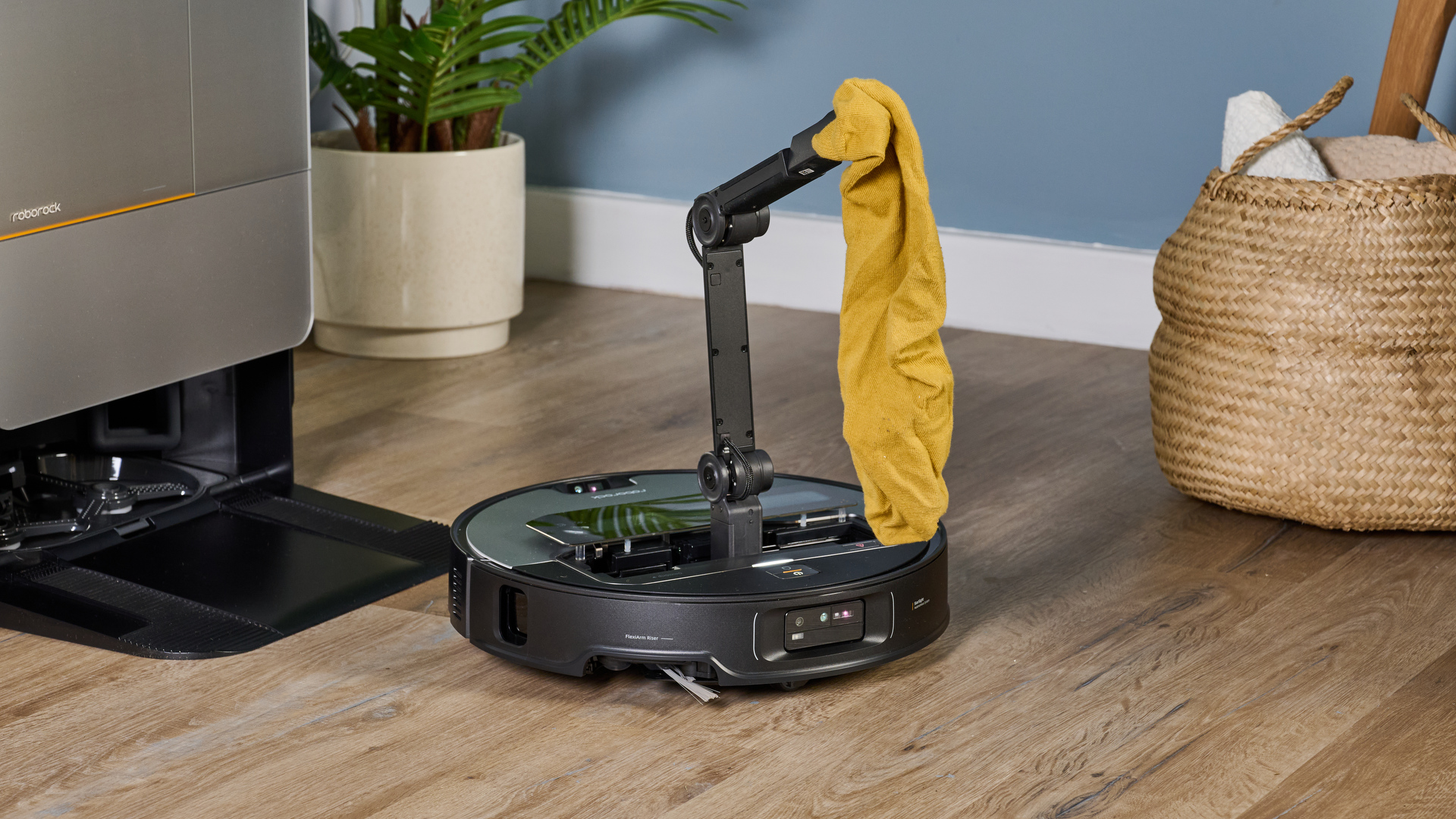4 things I loved about the world's first robovac with a mechanical arm – and 3 that need work
The Roborock Saros Z70 has big potential, but there's still a bit of a way to go

It seems that the big robot vacuum manufacturers all got together and decided that what we really need is a bot with a mechanical arm. One that can move clutter out of its path as it cleans, and even sort your mess out and relocate it where it needs to go. We saw a few arm-equipped robot vacuums at this year's CES – the event where everyone showcases their upcoming launches – but Roborock surprised everyone by announcing that its own model wasn't just at the wacky invention stage, it would actually be going on sale within the year.
Fast-forward a few months, and the Saros Z70 is indeed now available to buy. So does it deliver on its potential, or has Roborock rushed it through before the tech is ready? Is this innovative bot ready to compete with the rest of the best robot vacuums on the market? I've spent the past two weeks testing it out – you can get the full low-down in my Roborock Saros Z70 review.
While it's not perfect, there are plenty of great things about it – including a few that surprised me. Read on for 3 things I loved about this handy robovac, plus 3 that I think still need work if it's going to be genuinely useful.
3 things I loved
1. The pincering is excellent
The hardware part of the pincer arm is very well designed. In my tests I found I could remote control the robot over to a bit of clutter and tell it to pick it up, and it would – almost without fail – recognize it and adjust its positioning and pincer so it could pick it up. I could then resume control and drive the bot where I wanted the clutter to go.
Should the pickup fail, Roborock has included manual adjustment options so you can operate the arm yourself. These are intuitive and precise, and the grip is gentle but firm. The arm also tucks neatly away behind a hatch when it's not in use, so it can't get caught on anything while the bot's on its travels. There's big potential for people with limited mobility here.
2. There are plenty of safety measures
Most people I talk to about this robovac seem afraid that the OmniGrip will be overzealous and try and tidy away the cat. Roborock has built in plenty of safety features to ensure this doesn't happen. First, all the arm features are off by default, so nothing at all will happen until you specify exactly what you want it to do.
It's designed only to try and tidy very specific objects, having identified them using Roborock's (generally excellent) object recognition tech, and the arm has a weight sensor that prevents it from lifting objects over 300g. The pincering itself is designed to be 'firm yet gentle', to prevent damage to objects, so kind of like one of those fairground claw games, but with a much higher success rate. Finally, there's a physical 'Emergency stop' button on the robot itself, and a child lock.
Sign up for breaking news, reviews, opinion, top tech deals, and more.
3. It's easy to use
This is a new and potentially intimidating bit of tech, so kudos should go to Roborock for making it impressively accessible. It has placed the robot arm options front and center in the companion app, encouraging users to explore and become familiar with them. Plus, the controls themselves are logical and intuitive.
4. It's an unexpectedly great security camera
A lot of high-end robot vacuums can double as home security cams, but you're a little limited by the fact that your view is at ground level. Here, Roborock has added a camera on the arm itself. Not only can the arm reach much higher up, it can also tilt vertically, thus offering a much more expansive field of view than if you were using the front-mounted camera alone. Of course, you can only spy on what's happening inside your home, but useful nonetheless.
3 things that need improving
1. It doesn't work on its own
While the remote control-assisted pincering worked very well in my tests, really, the Saros Z70 needs to be able to tidy up unassisted if it's to be genuinely useful to most people. Theoretically, you can ask the robot to identify objects suitable for tidying while on a whole-home clean, then once it's finished, embark on a second run to pick them up and put them in a designated spot.
Unfortunately, this bit doesn't really work yet. It seems all the conditions need to be absolutely perfect in order for the process to be successful. So the bot needs to see the items and correctly identify them, then be able to find them again, then successfully pick them up, and then find its way to the correct relocation spot. I haven't yet managed a run where one of these factors doesn't fail.
Roborock also told me that the process has a lower success rate on carpet than hard floors, due to a "hardware limitation". That feels like a significant caveat.
If something appears to get stuck on the arm, then all other functions are locked until you manually reset it by pressing physical buttons on the robot. For instance, on one occasion during my tests the arm picked up a sandal, then as it rotated with it, the sandal got caught on a doorstop and the strap twisted, so when the bot tried to drop it, it couldn't. I had to go and rescue it before I could proceed. It's probably a logical safety measure, but it's not ideal to have to physically get involved to fix the matter.
I'm hopeful the automation functions will improve with updates, but right now, this bot can't really be left alone to tidy for you.
2. It can only pick up a few things
At time of writing, the list of supported objects is very short – sandals / light slippers, socks, small towels, and crumpled tissue paper. It makes sense that Roborock would be cautious about adding more objects, because it needs to be confident the bot can correctly identify them and doesn't end up trying to grip something it shouldn't. But it does limit its usefulness a little, as does the weight (and presumably size) limitation.
It's not so much Roborock's fault as a limitation of the form factor. Logically, it follows that the bot won't be able to tackle anything too big or heavy. But it still affects how helpful such a design might be in the longer term.

3. The price
At the moment, the Roborock Saros Z70 comes with a price tag of $2,599 / AU$3,999 (UK price TBC, but potentially around £1,950 based on what it costs elsewhere). It's the most expensive robovac we've tested, by some margin, and out of reach of most people. At the moment, it's the only robot vacuum on the market to feature a robotic arm, so an eye-watering list price isn't surprising. However, I'm not sure I'd buy it at that price, at least until some of the issues were ironed out.
Because the robot vacuum market is competitive, with new models being released regularly, I'm used to seeing good deals and prices dropping fairly quickly as even better bots hit the market. There look to be more arm-equipped robovacs in the pipeline from other brands, so if the idea proves a hit, we might see a more competitive pricing landscape emerge. I suspect it'll take a while, though.
You might also like...

Ruth is TechRadar's Homes Editor specializing in air (vacuum cleaners, fans, air purifiers), and hair (hair dryers, straighteners and stylers). She has been in consumer journalism since 2020, reviewing and writing about everything from outdoor kit to mattresses and wellness gadgets, with stints on Tom's Guide and T3.
You must confirm your public display name before commenting
Please logout and then login again, you will then be prompted to enter your display name.